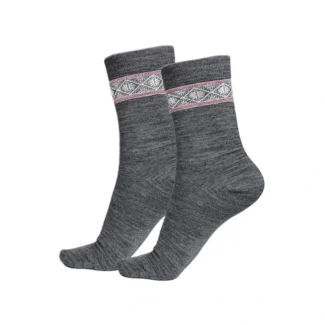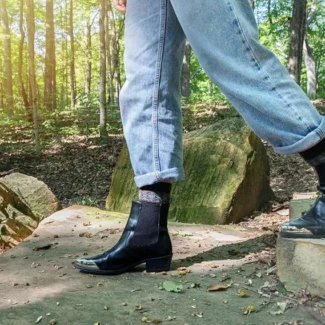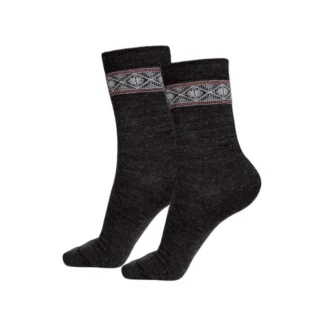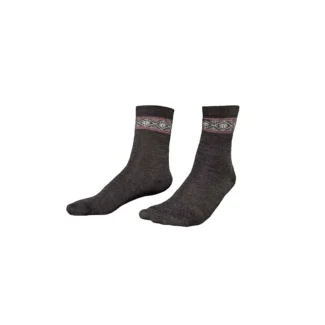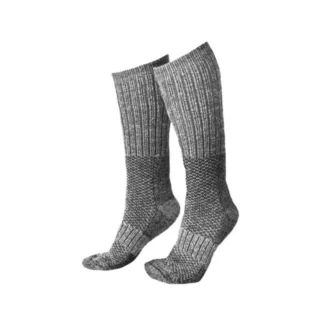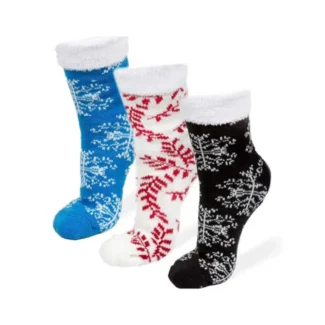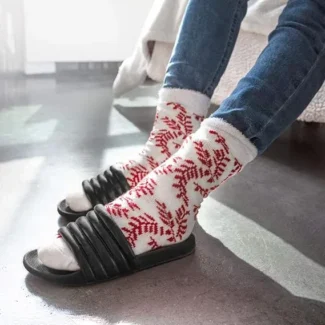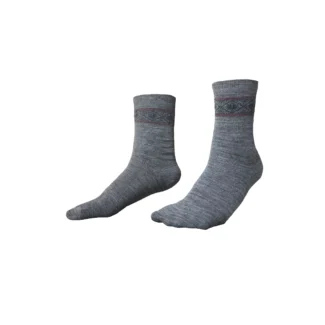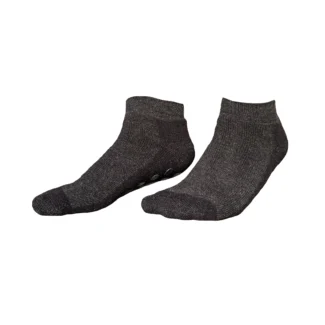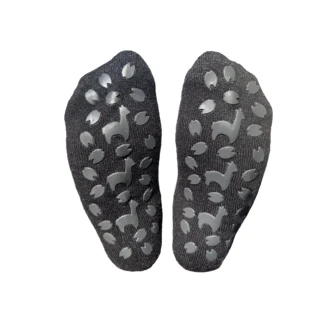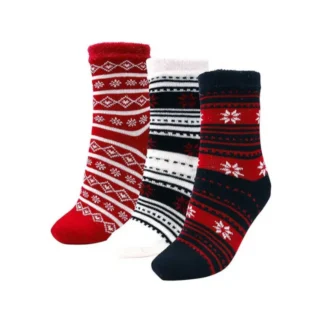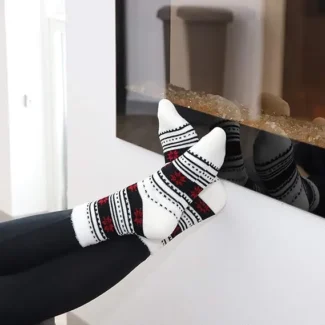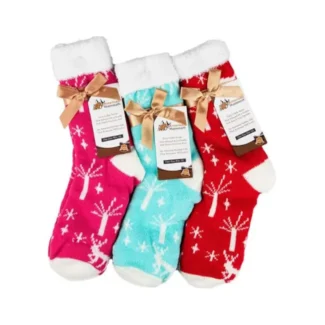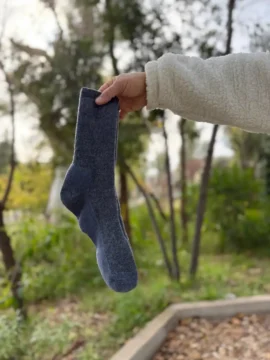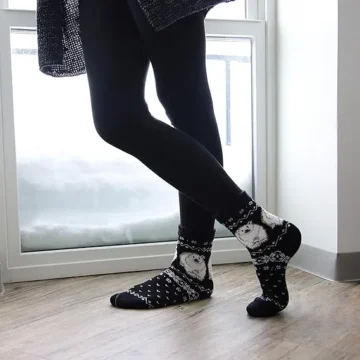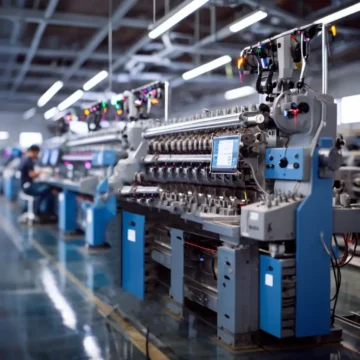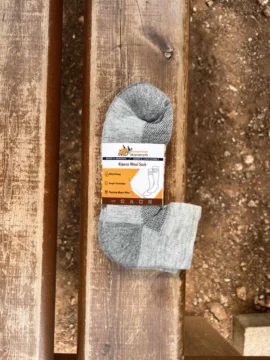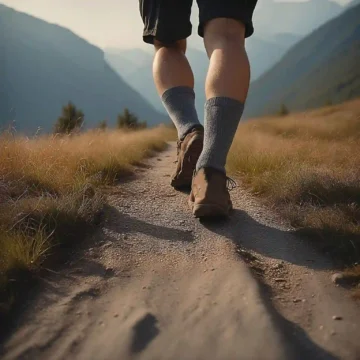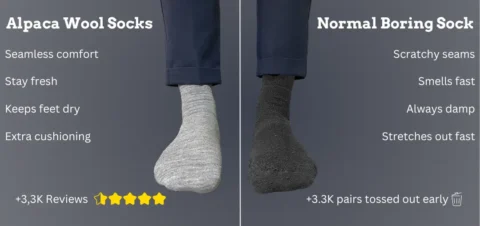
The Pros and Cons of Compression Socks – An Alternative You’ll Love
Compression socks are one of those things that seem like a genius invention. You put them on, and suddenly your legs feel supported, energized, and ready to take on the world. Whether you’re an athlete, a frequent traveler, or someone who stands all day at work, compression socks promise to boost circulation, reduce swelling, and prevent fatigue. Sounds amazing, right?
And honestly, they are—to an extent. There’s a reason doctors, nurses, and marathon runners swear by them. But here’s the thing: compression socks aren’t for everyone. While they have undeniable benefits, they also come with some drawbacks that no one really talks about.
So today, we’re going to break it all down—the good, the bad, and a comfortable alternative that just might change how you think about socks.
Compression Socks: The Good Stuff
First, let’s give credit where it’s due. Compression socks actually work. They’re designed to apply gentle pressure to your legs, helping to improve blood circulation and prevent fluid from pooling in your lower limbs. This makes them a game-changer for:
✅ People on their feet all day – If you work a job that requires long hours of standing (nurses, teachers, retail workers, you know the struggle), compression socks help keep leg fatigue and swelling at bay.
✅ Athletes and runners – Wearing compression socks after a workout can speed up muscle recovery and reduce soreness by helping push oxygen-rich blood back to the heart.
✅ Frequent travelers – Ever taken a long flight and landed with swollen ankles? That’s because sitting for hours can slow circulation. Compression socks reduce the risk of swelling and blood clots, especially on long-haul flights.
✅ Anyone with circulation issues – People with varicose veins, diabetes, or certain medical conditions often rely on compression socks to relieve discomfort and improve circulation.
Clearly, they serve an important purpose. But does that mean everyone should be wearing them all the time?
Compression Socks: The Not-So-Great Stuff
Here’s where things get a little less exciting. While compression socks absolutely have benefits, they also have some downsides that aren’t always mentioned.
🚫 They can feel too tight.
The whole point of compression socks is that they apply pressure to your legs. But for some people, that tight, squeezing sensation is just too much—especially if you’re sensitive to restrictive clothing.
🚫 They’re not the most comfortable for everyday wear.
Compression socks are great for specific situations, like long flights or post-workout recovery. But wearing them all day, every day? That can get uncomfortable. Most compression socks are made from synthetic materials, which can make your legs feel hot, sweaty, and trapped—especially if you’re wearing them for hours.
🚫 They can be difficult to put on (and take off).
If you’ve ever wrestled with a pair of super-tight compression socks, you know what we’re talking about. It can feel like a workout just getting them past your ankles. And at the end of the day? Good luck peeling them off without feeling like you’re fighting an octopus.
🚫 They don’t work the same for everyone.
While some people love them, others find them too restrictive, uncomfortable, or just not necessary for their daily lives.
So what if you want better foot and leg comfort, but compression socks just aren’t your thing?
That’s where Alpaca Socks come in.
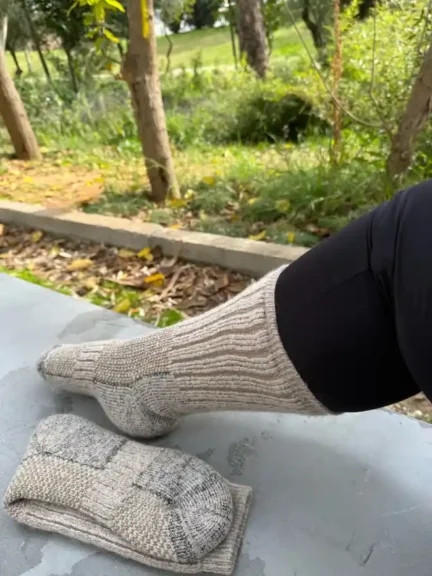
Alpaca Socks: A Different Kind of Comfort
Now, before we go any further, let’s be clear—compression socks and alpaca socks serve different purposes. Compression socks are medical-grade support wear, while alpaca socks are designed for all-day comfort, warmth, and durability. But if you’re looking for a comfortable, breathable, and long-lasting alternative for daily wear, alpaca socks are the unsung heroes your feet have been waiting for.
Here’s why:
🦙 They’re incredibly soft.
Ever put on a pair of socks that feel like you’re stepping into clouds? That’s what alpaca socks feel like. Unlike traditional wool (which can be scratchy), alpaca fibers are smoother and silkier, meaning they won’t irritate sensitive skin. Our Story at American Mammoth is all about crafting the softest, most luxurious alpaca socks designed for maximum comfort.
🦙 Temperature regulation like no other.
One of the biggest complaints about compression socks? They can make your legs feel hot and sweaty. Alpaca socks, on the other hand, keep your feet warm in the winter and cool in the summer thanks to their hollow fiber structure. They work like built-in climate control for your feet.
🦙 Moisture-wicking and odor-resistant.
Unlike synthetic compression socks, which can trap heat and moisture, alpaca socks wick away sweat—keeping your feet dry, fresh, and odor-free all day long. No more sweaty sock struggles!
🦙 Super durable (seriously, they last forever).
Compression socks tend to lose elasticity over time. Alpaca socks? They’re incredibly strong and long-lasting, making them a smart investment for people who hate constantly replacing socks. Check out our Heavyweight & Extra Thick Socks if you want serious durability and comfort.
🦙 Perfect for everyday wear.
Compression socks have their place in sports and medical use, but for daily comfort? Alpaca socks win every time. Whether you’re lounging at home, heading out for a long day, or braving the outdoors, they feel amazing on your feet.
The Best Choice for Your Feet? It Depends.
At the end of the day, it’s not about compression socks vs. alpaca socks—they’re just different tools for different needs. If you have specific circulation issues, run marathons, or need post-surgery support, compression socks are still a great option.
But if you’re looking for all-day comfort, breathable warmth, and a sock that lasts? It’s time to give alpaca socks a try.
And the best part? There’s an alpaca sock for every occasion:
🦙 Need a versatile everyday sock? Check out our Casual & Outdoor Socks.
Ready to upgrade your sock game? Shop now and feel the alpaca difference. Once you try them, there’s no going back!

